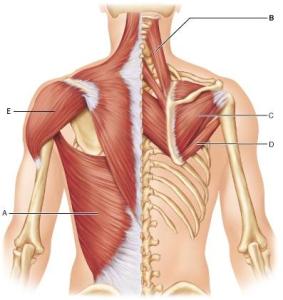Most Common Misconceptions About Practicing & Improving Technique
Share
 by Rozanna Weinberger
by Rozanna Weinberger
What is freedom and what does it mean when playing a musical instrument? What are the limitations we place on our capabilities and how do we transcend those limitations and create new patterns, both physically and emotionally? Why is overcoming fear inseparable to the way we play? Does our movement enable us to elongate our bodies & limbs or does it cause us to contract our muscles? And if we do contract our muscles are there feelings that accompany those technical passages? These are some of the many questions we can answer for ourselves as we broaden our perspective and overcome the limitations we place on ourselves to discover untapped potential in ourselves.This one simple factor alone, can make the difference between a performance that is enjoyable and musically satisfying vs. one riddled with fearful anticipation.
Automatic Patterns vs. Awareness & Slow Practicing 
One of the reasons that slow practice is so important is it prevents our ‘automatic responses’ to kick in. By this we mean habits in technique that may or may not be optimal. Do we clench before a big shift, for example? Do we grip the neck of the violin while going from one finger to the next? Many players are frustrated when they ‘know’ a problem to be true in terms of a verbal descriptor of what happens, such as squeezing of the hand and fingers excessively but can’t seem to ‘change it. ‘The smaller more slowly the movement we make, the finer tuned will our sensitivity to refined movements become. Thats the point at which the body starts to speak to us so that we’re not just experiencing the problem from the outside in helplessly.
Definitions worth noting: Elongate – “an exercise that elongates the muscles” Contraction – “the process in which a muscle becomes or is made shorter and tighter. “neurons control the contraction of muscles”**
Automatic Movements – Voluntary Movements
*According to Feldenkrais when most people encounter difficulties we tend to start avoiding those areas of difficulty. By the age of 13-14 many people have already established for themselves what they are and aren’t good at. To underscore those beliefs some will even create rules for oneself. For example ‘I’m not good at math’ or ‘I’m not really skilled at music.’ According to Feldenkrais, there is no limit to improvement. Every time we expand the limitations of our awareness the greater will be individuals ease of action.

With the invention of language we have muted the thinking process, relating instead primarily in words. Before language humans thought in a different way. Imagine going through a technical passage without mentally describing it along the way. What would that be like?? The problem with relating through language is that its ultimately a descriptor, separating us from the actual experience. Changing anything into language slows down the thinking process. For many, employing an approach to non verbal directions will open up a world of sensory experiences that inform the brain, which will eventually lead to repatterining of movements that previously seemed habitual.
So how does this relate to practicing? Lets take an aspect of left hand technique that effects many people. For many it may be going from the 1st finger to the 4th finger comfortably. (You’d be surprised how many professional level players learn to tolerate a certain amount of discomfort!) The following study should be done as slowly as possible. The aim is not the number of repetitions but the quality of the experience. We will begin by breaking this study down to its minutia, simply placing the first finger on the string.
Bring up violin or viola then commence to bring the 1st finger to the B on the A string.
- How many different ways can you position the hand in relation to the space between your thumb and index finger?
- Where do you tend to place it by habit? Its not necessary to mentally tell yourself a descriptor of the placement. Just let your body do it.
- This time bring up instrument in preparation for 1st finger, but intentionally position the hand differently. Could be higher or lower than what you tend to do automatically.
- Repeat step 2 simply bringing up the hand & fingers allowing yourself to do what happens automatically.
- Repeat step 3, placing neck of instrument in non habitual place, perhaps above the habitual placement this time.
- Again do what is habitual
After doing this feel free to rest a moment. If the body becomes to strained from repetition, the feeling of strain will pervade the sensory experience. The player can then experiment going from 1st finger to 4th finger, making similar observations of where the hand is in relation to the neck of the violin or viola.
Through this entire process see if its possible to process the experience in non verbal ways. What are the signals your body is giving you directly? Its in these tiny, seemingly imperceptible moments when our body speaks to us that we create new more efficient patterns of movement that eventually become automatic.
It will also be possible to notice if one tends to contract the hand going from finger to finger or elongate the hand and fingers. While it is counter productive to tell oneself how it should feel in advance, suffice it to say, when the left hand is moving optimally there will eventually be a feeling of expansion from note to note as player learns to balance hand and fingers in relation to fingerboard.
This same kind of exploration can also be applied to the wrist, the finger pads on the finger board, etc.
Use Of Large Back Muscles Effect Ease of Left Hand Mobility

For movements of the hand to become truly efficient the player will need to eventually ‘discover’ how the larger muscles of the torso/back, even pelvis – are involved in seemingly unrelated movements of the left hand. To do this one must first discover how to support the instrument using the back muscles rather than just the arm and neck. This will be a topic for further exploration.
* Awareness Through Movement, Moshe Feldenkrais, 1972,
** Google Search

1 comment
Hello Rozanna,
And many thanks for sharing your valuable experiences with the violin.
I wonder how your practical ideas compare with those of the late and gifted Kato Havas?
Best wishes,
Stewart